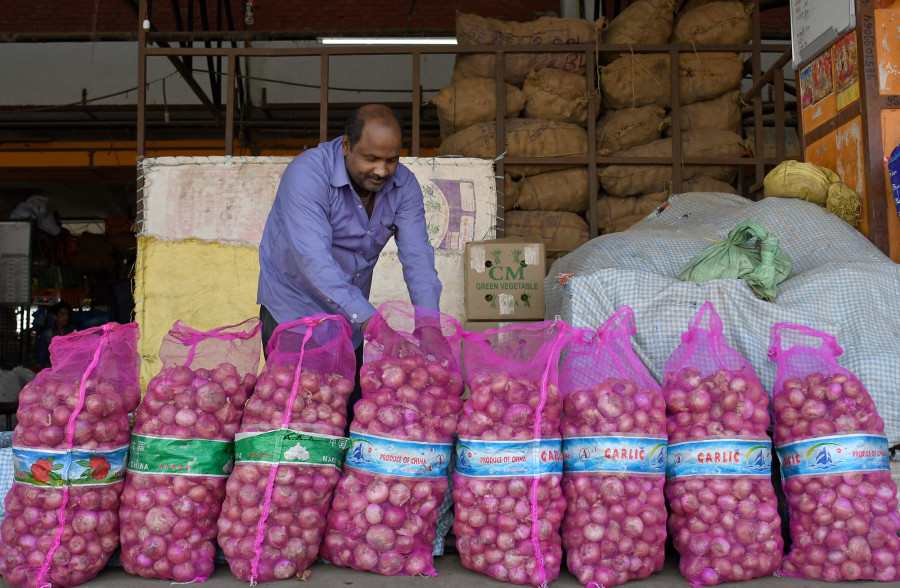Money
Onion prices still on high side despite resumption of import
Traders contend that prices are not coming down due to a jump in demand in the international market.
Krishana Prasain
Rachana Subedi is surprised that people still have to pay Rs110 for a kilo of onions even though prices have plunged in India which fulfils almost all of Nepal's requirement.
The pungent bulb, which is an essential item in every kitchen, had become scarce and expensive after India slapped a ban on its export. The price then had gone up to Rs150 per kg.
Now the embargo has been lifted following bumper harvests and abundant supply, but Nepalis are still being made to pay through their nose, fumes the 40-year-old housewife from Chabahil.
Subedi said she had expected the price to come down to Rs40-50 per kg. “I don’t know why onions are still expensive.”
The retail price of onion in India dropped to just over IRs30 per kg (Rs50) since December 31, 2019 when the nationwide average price of onion was as high as IRs100 per kg, according to Indian media reports.
“Traders had increased the price overnight when India imposed the export ban on onions. But it’s not coming down although there is an abundant supply of onions in the market,” said Subedi.
Onions cost Rs75 per kg wholesale at the Kalimati Fruits and Vegetable Market, the country’s largest vegetable bazaar. The vegetable costs around Rs80 per kg at the Balkhu Agriculture and Vegetable Market.
On September 14 last year, India imposed an export ban on all varieties of onion and lifted the ban after three and half months following a sharp fall in the price, reported Indian media.
But prices in Nepal have still not come down. Nepali traders contend that onion prices are not coming down due to a sudden hike in demand in the international market.
As soon the ban on export was imposed, Nepali traders hiked the wholesale price to Rs90 per kg from Rs60. Many traders in the Kalimati vegetable market were found hoarding onions to create an artificial shortage and jack up prices.
The Department of Commerce, Supplies and Consumer Protection launched an inspection and seized 12 tonnes of onions stashed away in a warehouse in Kathmandu.
Binaya Shrestha, deputy director at the Kalimati Fruits and Vegetable Market Development Board, said that despite the normal supply, onion prices had not come down. “Traders are saying that the price has not declined in the Indian market.”
According to Shrestha, the Kalimati Fruits and Vegetable Market is currently receiving 70-80 tonnes of onions daily. The market used to receive an average of 80 tonnes of onions daily when supply was normal.
During the ban also, the market was receiving 40-50 tonnes of onions daily, he added.
Resham Tamang, administrator at the Balkhu Agriculture and Vegetable Market, said that supply had declined due to a sudden rise in demand in most South Asian markets which pushed the price up. Tamang expects the price to decline once supply increased.
The Balkhu Agriculture and Vegetable Market is receiving around 100 tonnes of onions daily, he said.
According to the Department of Customs, the country imported shallot and dried onion worth Rs1.51 billion in the first five months of the current fiscal year.
Onion imports were valued at Rs4.22 billion in the last fiscal year. Nepal is almost totally dependent on India for its onion requirement as domestic production is negligible.
India is the world's biggest exporter of onions, a staple in South Asian cooking. Countries such as Bangladesh, Nepal, Malaysia and Sri Lanka rely on Indian shipments.




 20.12°C Kathmandu
20.12°C Kathmandu















